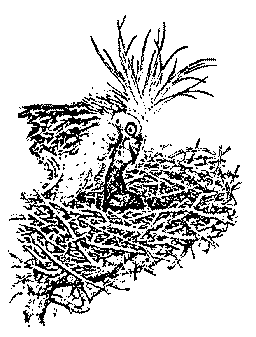 |
Science Frontiers ONLINE No. 66: Nov-Dec 1989 |
|
|
The Bird That Smells Like Cow Manure
Pity the poor hoatzin. This "extremely primitive" bird is usually described as being just a step beyond the reptiles. The hoatzin clambers around the jungle foliage using functional claws on its wings. This certainly sounds "primitive." Then, we have that awful smell!
 A hoatzin feeds its chick a regurgitated mush of partially digested leaves. |
Grajal et al remark on all the advantages that foregut fermentation confer on the hoatzin and how remarkable it is that this digestive process can be accomplished in such a small volume (cows have huge stomachs). How did the hoatzin hit upon this mechanism before the mammals did? Why didn't other birds "adopt" it? Grajal et al speculate about this hoatzin advance:
"Their highly specialized digestive strategy may have arisen from an ancestral nonobligate folivore because of an evolutionary trade-off between detoxification of plant chemical defenses and enhanced use of cell wall as a nutritional resource."
(Grajal, Alejandro, et al; "Foregut Fermentation in the Hoatzin, a Neotropical Leaf-Eating Bird," Science, 245:1236, 1989.)
Comment. The rather murky quotation above is only speculative. Leaves are abundant in the tropics, and it is fair to ask why other birds did not develop foregut fermentation.